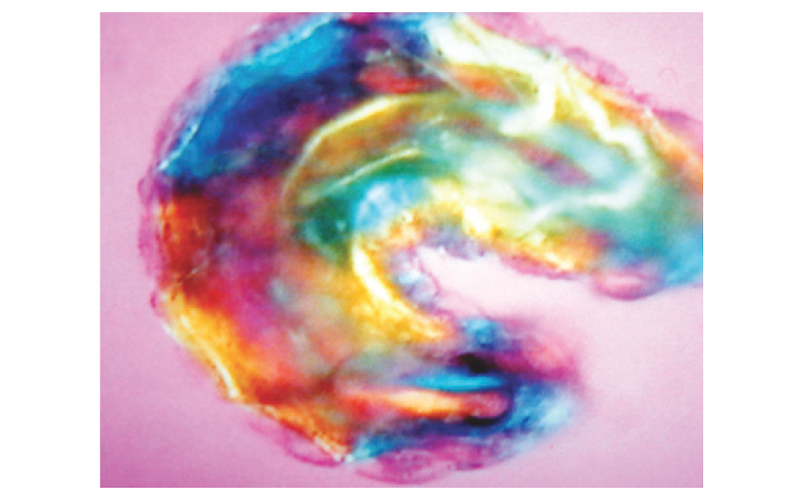
The human body consists of 60-70% water. About 70% of the total volume of water is found in cells and the remaining amount is extracellular. Up to 67% of extracellular water is found between cells and is referred to as interstitial fluid. 20% of extracellular water is circulating in blood. The remainder is trans-cellular and is located within the eyes, joints, abdominal cavity, cerebrospinal fluid and axoplasmatic liquid in the nervous system.
Water is a means of transport, acts as a metabolic solvent, reduces friction, buffers heat associated with metabolic activity and is involved in 99% of chemical reactions in the body. Water contributes to overall tissue volume and therefore biomechanical function.
The body’s water biosystems convey information and metabolic energy, these functions depend on an optimal ratio between structured (so called pseudo-crystalline water) and free water. Structured water is a gooey gel arranged around biological polymers. Free water is less structured and less gooey (more like water from the tap). Perturbations of this ratio are thought to have significant implications for our body and wellbeing.

The transition from structured pseudo-crystalline gel to free water is an example of phase change. Phase change is sudden. The capacity of biological gels to undergo phase change accounts for many cellular and physiological activities including nutrient and electrolyte transport, cellular motility, muscle contraction and nerve conduction.
Vast amounts of water are organised and form a pseudo-crystalline gel inside the connective tissue matrix of the body. The composition and amount of water, in the connective tissue of an organism, influences its biomechanical properties.
Cellular water appears to have a geometrical structure that enables continuous distribution of tension. Water connects with the geometry of the cytoskeleton, which connects to the extracellular matrix and the body through the connective tissue, providing the basis for whole body integration.

Hydrated connective tissue, that contains lots of gooey structured water, is more resistant to potentially harmful loads and mechanical deformation. Conversely tissue that is dry, tense, habitually overused or immobilised contains less structured water and is prone to injury.
This dry scenario causes a proliferation of disorganised collagen which exacerbates the densification of connective tissue by excluding water. Tissue in this dry state disrupts the efficient propagation and dissipation of biomechanical forces causing soft tissue injuries, adaptation and physical remodelling. Additionally, dry, tense and dense connective tissue muddies and distorts interoception.
FEATURED IMAGE:
Mae-wan Ho. The Rainbow and the Worm (2008).
